Nice work IKEA and thanks MobileAD news
IKEA Uses Mobile Augmented Reality To Engage Shoppers’ Imagination
Earlier in 2009 IKEA launched a new line of furniture, IKEA PS, whose objective was to stretch the idea of design, to think about empowering people, and to minimize the impact on the world.
With such unusual designs, IKEA felt they had to do something special to help customers imagine how this furniture would fit into their houses, so they turned to a mobile augmented reality solution.
The Portable Interior Planner application gives customers the ability to see exactly how the new designs will look in their home, without the need to actually move any furniture!
Mobile Augmented Reality has become a hot topic recently. An “Augmented Reality” system deals with the combination of real-world and computer-generated data, and generates a composite view for the user that is the combination of the real scene viewed by the user and a virtual scene generated by the computer
The beauty of the IKEA application is the simplicity and strong appeal of the basic proposition: wouldn’t it be nice if you could bring all these new furniture designs home to see how they might look in your own house. While this would be very difficult to do in the physical world, it is a perfect application for mobile augmented reality.
In fact, technology advancements in mobile handset cameras, screens, and processing power are enabling lots of new and interesting consumer applications in the entire field of mobile visual interactivity (see MobiAD article Visual Interactivity: The Next Great Way To Engage Consumers and NIKE PHOTOiD: Using Color To Connect With Customers)
The Application
To help overcome a customer’s lack of imagination, IKEA worked with Ogilvy and Mindmatic to design and build a mobile application that is a portable interior planning tool.
Here’s how it works:
- In the application are images of many of the pieces of furniture from the new IKEA PS line. The customer selects the product they are interested in, and then selects “Take a Picture”.
- The customer aims the camera of the phone at the area of the room where the furniture might be placed. The image of the room appears on the phone screen, along with the IKEA furniture. The furniture can be scaled larger or smaller to make it fit better in the scene.
- Once the image is the way the customer wants it, they use the camera to take a picture of the scene.
- If the customer likes the photo, they can either save it on the phone, or send it via MMS directly from within the application
How it looks
Here are some images of the IKEA application in use.
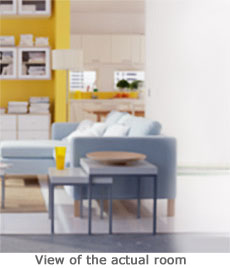
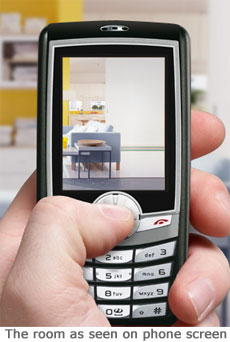
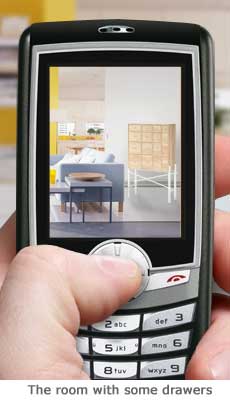
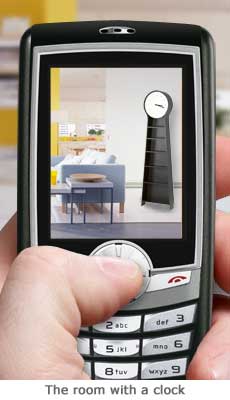
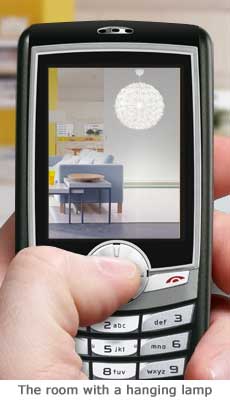
Distribution

The IKEA PS made the mobile application available to consumers in three ways:
1) In-store posters urged customers to send a free text message to IKEA to receive a link to download the application.
2) Customers going to the IKEA website were able to enter their mobile number and receive a download of the application.
3) Bluetooth pillars were installed in IKEA certain stores. These would periodically sent out signals to nearby phones inviting the subscriber to download the application.
Conclusion
We believe that the IKEA interior planning tool application is a great example of applying the unique attributes of mobile to a specific customer situation. In this case, providing customers with an easy-to-use means to understand exactly what a piece of furniture would look like in their home.
A couple of key points to take away from this campaign:
• Sometimes simple, single use apps are the best. As Magnus Jern, MD of Golden Gekko told us when discussing how to develop great marketing apps, “Prioritize just the key functionality, avoid the temptation to make the app do too many things, or you will never finish.” (from MobiAD article Mobile Applications: The Next Big Thing In Mobile Marketing?)
• The relatively low development costs for mobile apps means that this type of app can be build economically for a specific campaign (although this sort of capability could certainly be an ongoing part of IKEA marketing).
• Emerging technologies, such as mobile augmented reality or visual interactivity will be an important force in enabling new opportunities for brands to communicate with their clients, especially with branded utilities. The key will be to marry new technologies with real customer needs in a simple to use way. The proper application of mobile technology with a good user interface to offer a specific solution is what’s really important.

No comments:
Post a Comment